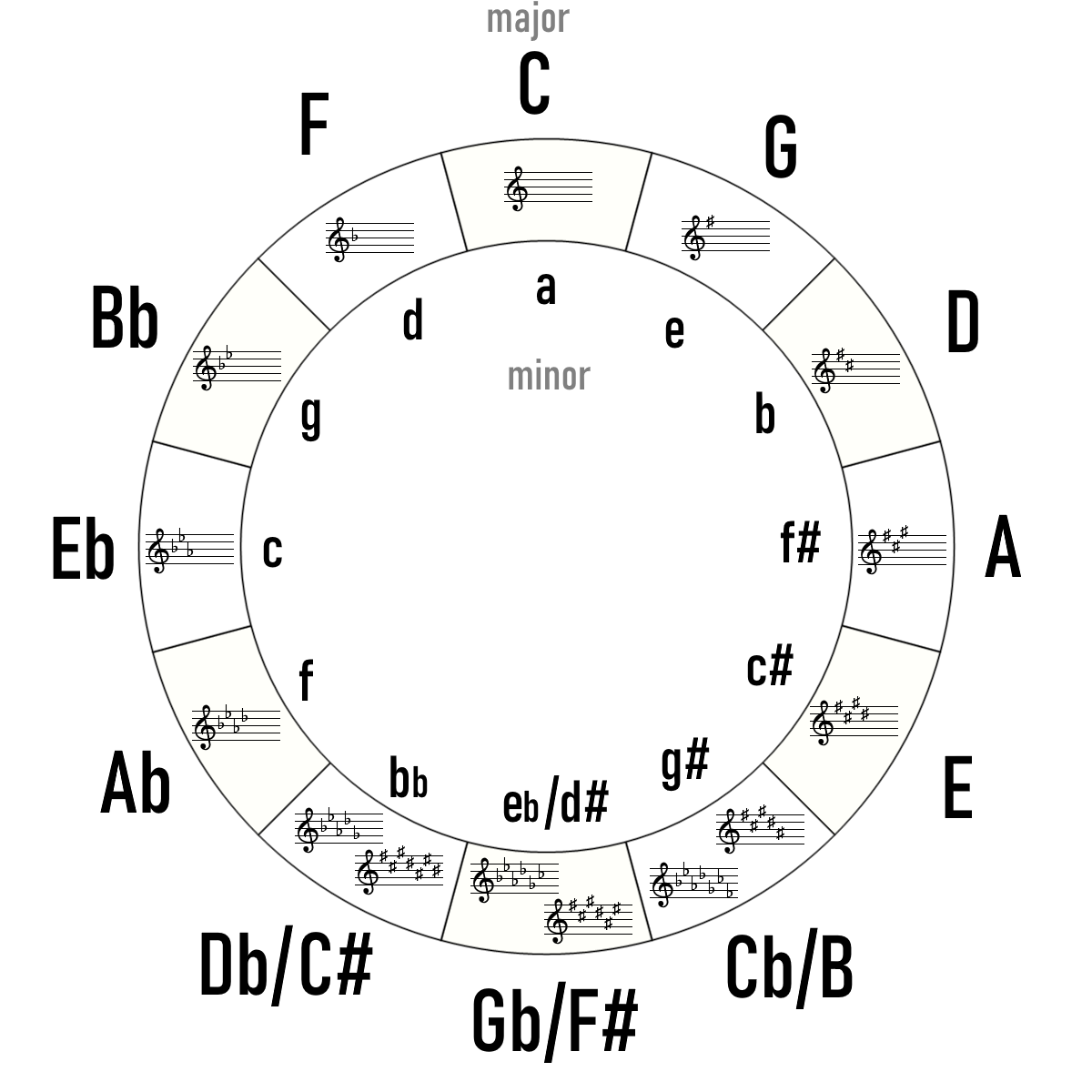Tutorial: Music theory basics
Something every musician will eventually run into is the Circle of Fifths. It's a practical visual aid to quickly find which keys have which sharps and flats.
Introducing the Circle of Fifths
Take a look at the image below, this is the Circle of Fifths. So what can we do with it?

On the outside of the Circle of Fifths we find the major scales and on the inside we find the minor scales. Within the circle we find which sharps or flats that scale has. The circle starts off at the top with the two scales that have no sharps nor any flats: C major and A minor. The relative major and minor keys are sharing the same piece of the circle here.
When we follow the circle clockwise, we jump ahead in fifths, meaning we jump to the key that matches the 5th note of the current key. Hence the name Circle of Fifths. The listing below shows each jump of a fifth that's taken to get to the next key in the circle.
Major keys C D E F G G A B C D D E F♯ G A A B C♯ D E E F♯ G♯ A B B C♯ D♯ E F♯ F♯ G♯ A♯ B C♯ C♯ D♯ E♯ F♯ G♯
As we've seen before, the G♯ major scale cannot be expressed using sharps because according to the major whole/half pattern, we'd end up with the notes G♯ A♯ B♯ C♯ D♯ F G. We'd end up having both the G and the G♯ in there (and we took an ugly little shortcut putting a B♯ in there instead of a C to prevent a clash with the C♯). This is why instead of G♯, the Circle of Fifths changes to flats by going to the A♭ instead. Once it hits A♭, it follows the same principle:
Major keys A♭ B♭ C D♭ E♭ E♭ F G A♭ B♭ B♭ C D E F F G A B♭ C
And that brings us right back to C and the circle is complete.
We can do the same for the minor keys on the inside of the circle. Start off with Am (A minor) and jump ahead to the fifth of each scale to get the next scale:
Minor keys A B C D E E F♯ G A B B C♯ D E F♯ F♯ G♯ A B C♯ C♯ D♯ E F♯ G♯ G♯ A♯ B C♯ D♯ Here we need to switch to flats. D♯ is the same note as E♭. E♭ F G♭ A♭ B♭ B♭ C D♭ E♭ F F G A♭ B♭ C C D E♭ F G G A B♭ C D D E F G A
Now that we have a basic understanding of the major and minor scales, what notes they contain and how they relate to each other, we can start looking at chords. What are they, how do we construct them and how can we find the rights chords for a specific key.
